Two or three weeks ago we had a chat with a couple who had brought their motorhome up from Southern Spain to where we met them in the North. As often happens in these circumstances maps came out and notes were swapped. One of the places that was recommended was the village of Alberca. I had checked out comments about Alberca and its aire on one of my apps and opinions were unanimously positive. So this morning I dialled the co-ordinates for Alberca into SatNav and off we set.
It was only a few miles until we reached the, for once, well marked Spanish border. Much to my surprise all HGVs were being pulled over into a special holding area and I presume some were being checked by the officials who were present. This, together with the 20 plus mile queue we came across at the Greece/Bulgarian border last year makes clear that the EU single market and free movement of goods is not completely as advertised!
We were not long over the border when Spain began to look as Spain should. A huge arid plain stretching as far as the eye could see. To be fair we have only been to Central Spain in the summer and now the autumn, so it is possible that in Spring all is lush greeness, but this is the Spain of Sancho Panza and my imagination.
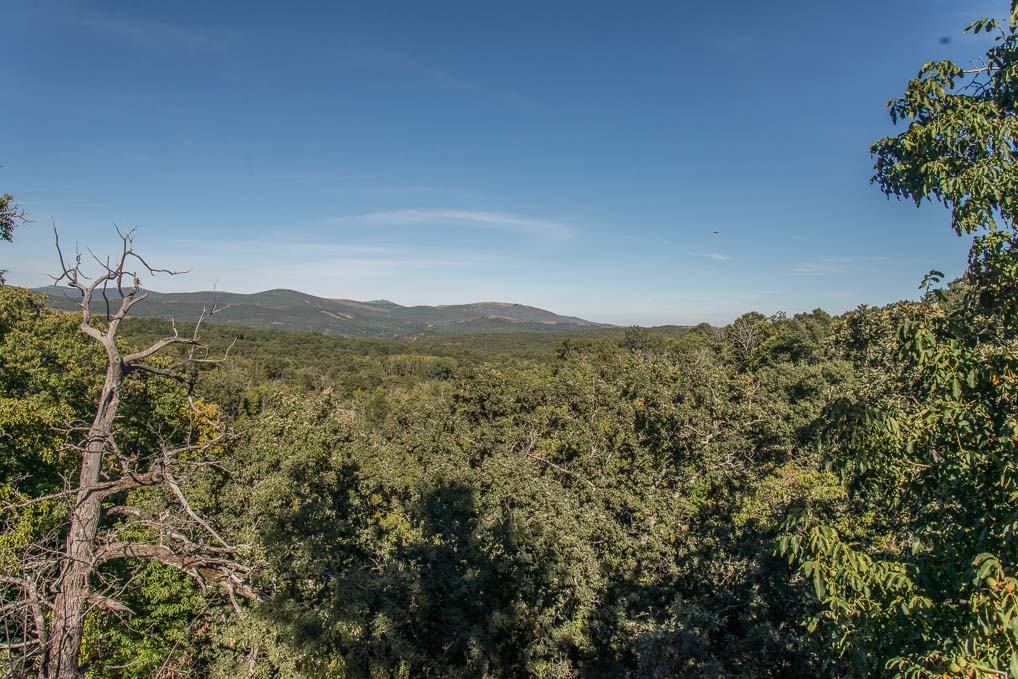
The Batuecas
As we approached our destination suddenly, sprouting from the plains, there appeared a small range of hills emerald green against the dusty background. These were the Batuecas, a tiny range of forested hills which rise from the Spanish plain and it is in these hills that Alberca is located.
There were a few miles of narrow twisting roads and then we were happily ensconced in Alberca’s free aire (40.489018 , -6.116598).
Our normal Spanish methodology kicked in and we sheltered in Basil until the heat of the day had begun to fade.
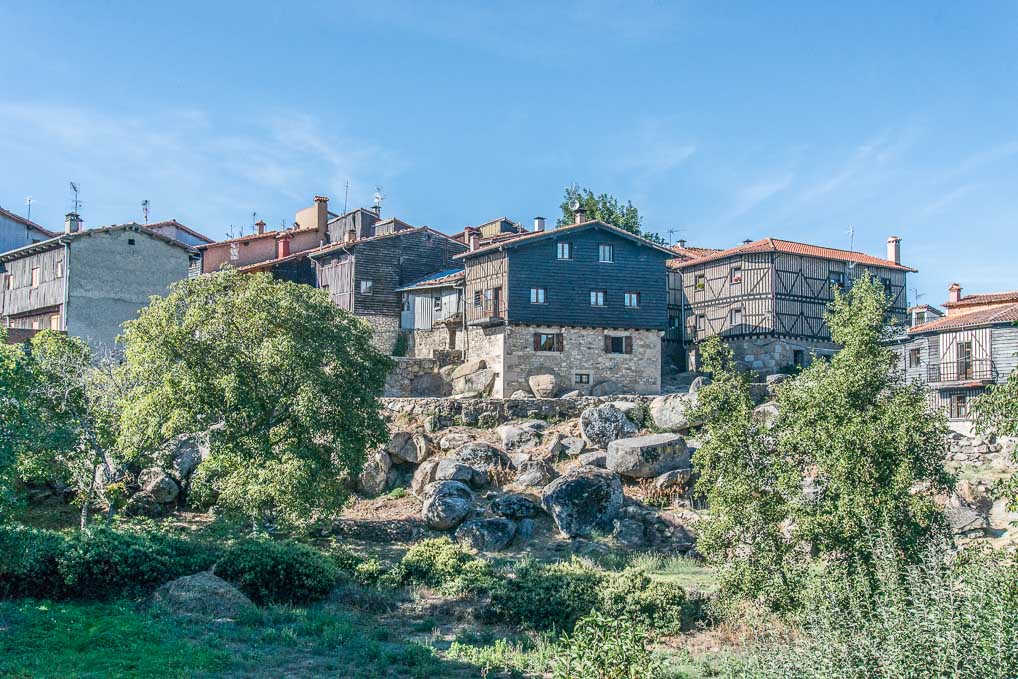
Albarca
Alberca is not a town with any particular monuments or museums, but is a superb example of a small village where nothing much appears to have changed for 300 years. The cobbled streets are mostly too narrow for vehicles and it is therefore easy to explore without looking out for speeding cars.
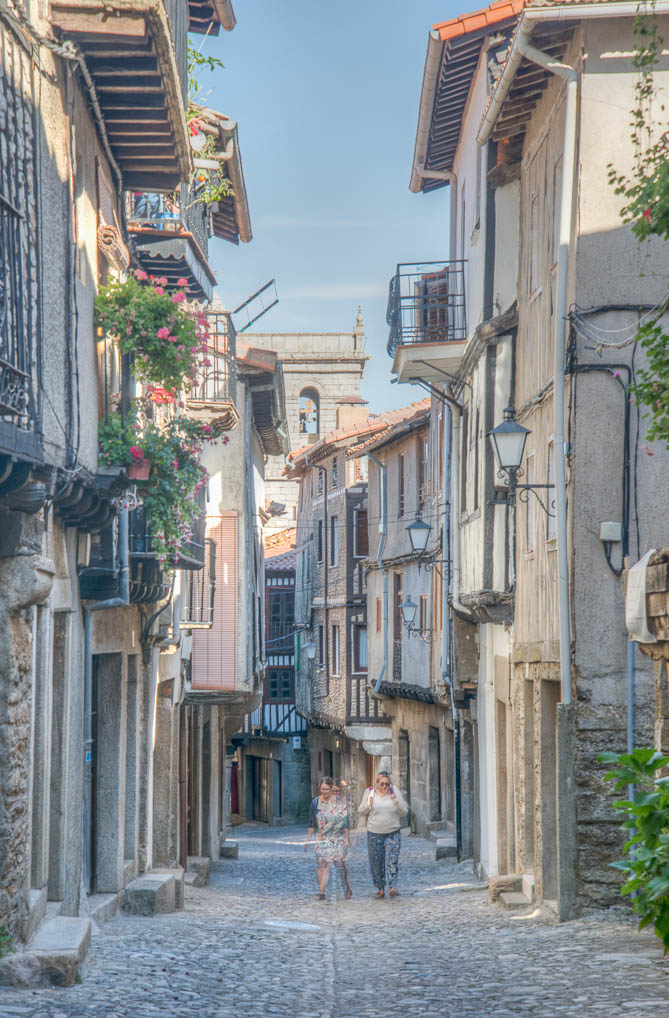
Street Scene
Virtually all of the houses are from at least the 18thcentury, most half timbered with limewash render. Any new houses have been built in the same style so that the village has a completely homogeneous architectural feel. For anyone who has visited York in the UK, think of the Shambles extended to a whole village.

Street Scene
Many of the solid stone door lintels have hand carved symbols inscribed on them with varying degrees of skill. Some of these are obviously religious, such as “Ave Maria”, but others are more difficult to decipher. There is a lovely little church with a beautifully brick vaulted roof interior.

Albarca Church

Church Interior. Note the brick vaulting
I have read that in the summer Alberca can be overrun with tourists and there were a fair few tat shops. But also the area specialises in dried hams and this was the product being most widely sold. Luckily for us at this time of year the village was pretty quiet. The aire has about 8 motorhomes on it and we saw a couple of coach parties, but Alberca is big enough to happily swallow these numbers and we were often alone as we wandered the narrow streets.
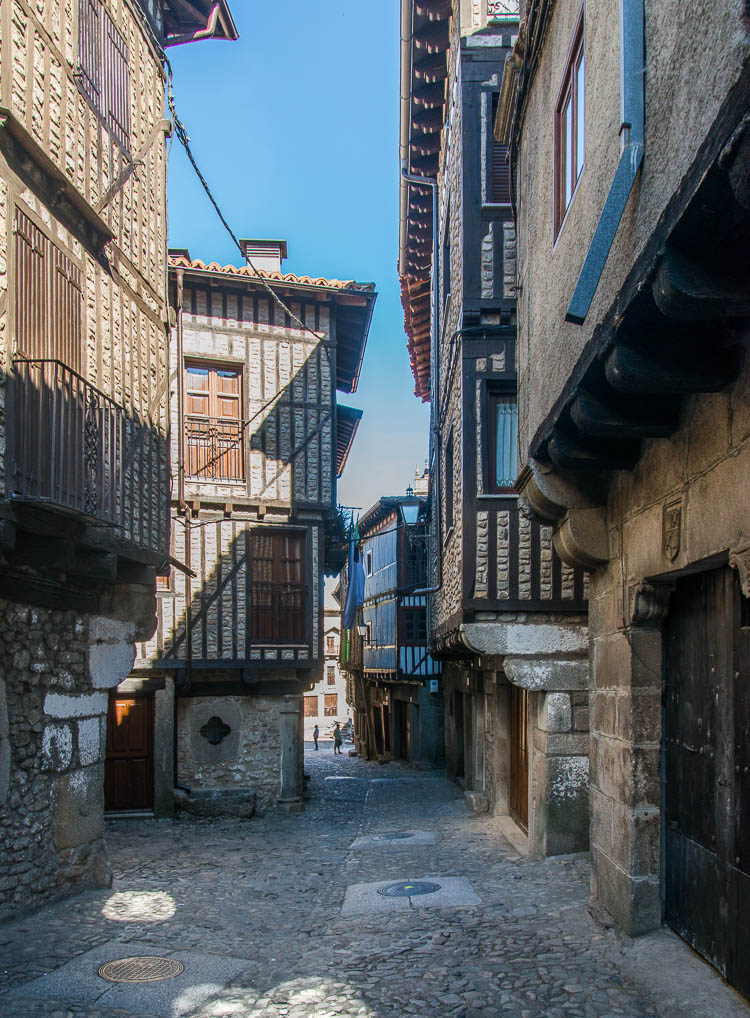
Street Scene
The Rough Guide implies that Alberca’s streets are overly neat and it is all almost too pretty, but from our perspective it has been another worthwhile stop on our journey and somewhere that visitors will never come across if they stick to the better known areas of Spain.

Back by popular demand – door of the day
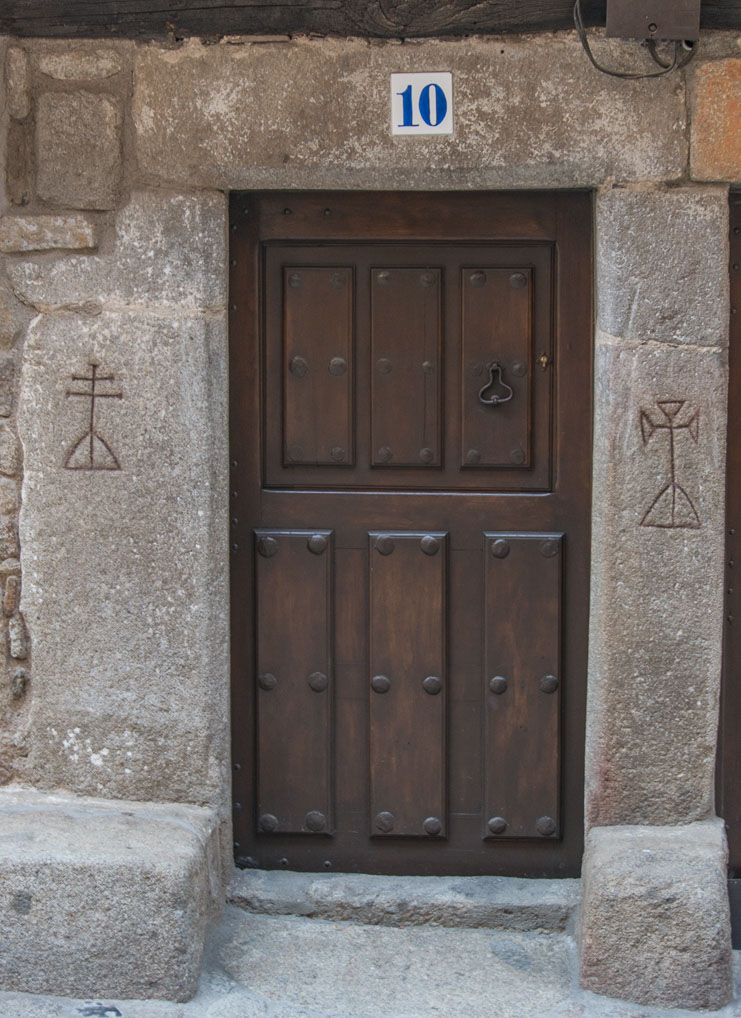
Sarah’s door of the day showing the strange inscriptions.
